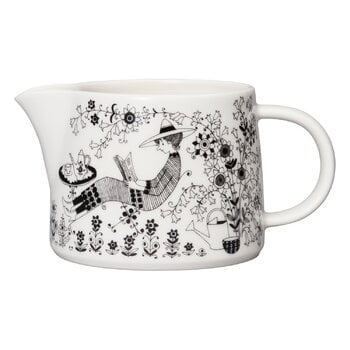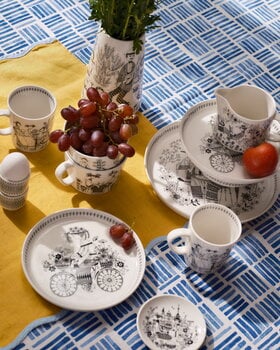Arabia’s Emilia pitcher is adorned with a delightful decoration designed by Raija Uosikkinen. The small pitcher can be used as a milk jug when serving coffee or as a gravy boat at the dinner table, for example.
Raija Uosikkinen originally designed the enchanting Emilia decoration in 1957, and the series was in Arabia's production until the year 1966. Emilia brought a fascinating contrast to the sleek and simple designs of the 1950s, as it was decorated with vines and beautiful details, yet tamed by its black-and-white colouring. Arabia re-launched the enchanting Emilia decoration in 2023.
The story goes that the Emilia motifs were inspired by the designer's own Aunt Selma, who lived a relaxed life in America. Elegantly dressed characters spend sunny days in the garden, on a picnic and lying in a hammock. Each part of the Emilia tableware conveys a fabulous breeze of holiday spirit and the leisurely feel of days off.




